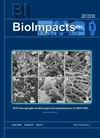全身一氧化氮代谢物与糖尿病前期血糖恢复正常的几率:一项为期 9 年的队列研究
IF 2.2
4区 工程技术
Q3 PHARMACOLOGY & PHARMACY
引用次数: 0
摘要
引言:我们的目的是追踪糖尿病前期(Pre-DM)受试者血糖状态的纵向变化与其全身一氧化氮(NO)产生的基线水平(即用一氧化氮测量)的关系:我们旨在追踪糖尿病前期(Pre-DM)受试者血糖状态的纵向变化与其全身一氧化氮(NO)产生的基线水平[即以血清一氧化氮代谢物(NOx)、经粗略和体重(BW)调整的一氧化氮与肌酐的比率(NOx-to-Cr)来衡量]在9年时间里的关系。研究方法这项队列研究纳入了 541 名患有糖尿病前期的伊朗中年男子和妇女,他们于 2006-2008 年被招募,并随访至 2015-2017 年。采用比色格里斯法测定血清氮氧化物浓度。多叉逻辑回归分析估算了血清氮氧化物、粗比率和体重调整后的氮氧化物与铬比率的三等分(三等分 3 与三等分 1 和三等分 2)Pre-DM 回归和进展的几率比(OR)。结果:与发展为 2 型糖尿病(T2D)或仍为糖尿病前期(0.52±0.34 vs. 0.43±0.25 和 0.48±0.29,P=0.023)的患者相比,血糖恢复正常(NG)的患者具有更高的体重调整后氮氧化物-Cr 比值。体重调整后的 NOx-to-Cr 越高,恢复到 NG 的几率越大(OR=2.05,95% CI=0.98-4.32,P=0.058),随着时间的推移,2h 血清葡萄糖水平降低(Ptime×group=0.025),以及空腹血糖(106,95% CI=103-109 vs. 110,95% CI=108-112 mg/dL,P=0.008)和 2 小时血清血糖(153,95% CI=146-159 vs. 163,95% CI=158-168 mg/dL,P=0.018)的总体平均值下降。结论DM前期受试者的内源性氮氧化物产生量较高(即通过体重和Cr调整后的血清氮氧化物浓度间接测量)与恢复NG的几率有关。本文章由计算机程序翻译,如有差异,请以英文原文为准。
Systemic nitric oxide metabolites and the chance of pre-diabetes regression to normoglycemia: A 9-year cohort study
Introduction: We aimed to track longitudinal changes of glycemic status in subjects with pre-diabetes (Pre-DM) in relation to their baseline levels of systemic nitric oxide (NO) production [i.e., measured as serum NO metabolites (NOx), crude and body weight (BW)-adjusted NOx to creatinine ratio (NOx-to-Cr)] over 9 years. Methods: This cohort study included 541 middle-aged Iranian men and women with Pre-DM, recruited in 2006-2008 and followed up to 2015-2017. The colorimetric Griess method was used to measure serum NOx concentration. Multinomial logistic regression analyses estimated the odds ratios (OR) of Pre-DM regression and progression across tertiles (tertile 3 vs. tertile 1 and tertile 2) of serum NOx, crude, and BW-adjusted NOx-to-Cr ratio. Results: Participants who regressed to normoglycemia (NG) had a higher BW-adjusted NOx-to-Cr ratio than those who developed type 2 diabetes (T2D) or those who remained Pre-DM (0.52±0.34 vs. 0.43±0.25 and 0.48±0.29, P=0.023). Higher BW-adjusted NOx-to-Cr increased chance of returning to NG (OR=2.05, 95% CI= 0.98-4.32, P=0.058) and decreased levels of 2h-serum glucose over time (Ptime×group=0.025), as well as the decreased overall mean of fasting (106, 95% CI=103-109 vs. 110, 95% CI=108-112 mg/dL, P=0.008) and 2h-serum glucose (153, 95% CI=146-159 vs. 163, 95% CI=158-168 mg/dL, P=0.018). Conclusion: A higher endogenous NO production (i.e., indirectly measured by BW- and Cr-adjusted serum NOx concentration) in Pre-DM subjects is associated with the chance of returning to NG.
求助全文
通过发布文献求助,成功后即可免费获取论文全文。
去求助
来源期刊

Bioimpacts
Pharmacology, Toxicology and Pharmaceutics-Pharmaceutical Science
CiteScore
4.80
自引率
7.70%
发文量
36
审稿时长
5 weeks
期刊介绍:
BioImpacts (BI) is a peer-reviewed multidisciplinary international journal, covering original research articles, reviews, commentaries, hypotheses, methodologies, and visions/reflections dealing with all aspects of biological and biomedical researches at molecular, cellular, functional and translational dimensions.
 求助内容:
求助内容: 应助结果提醒方式:
应助结果提醒方式:


